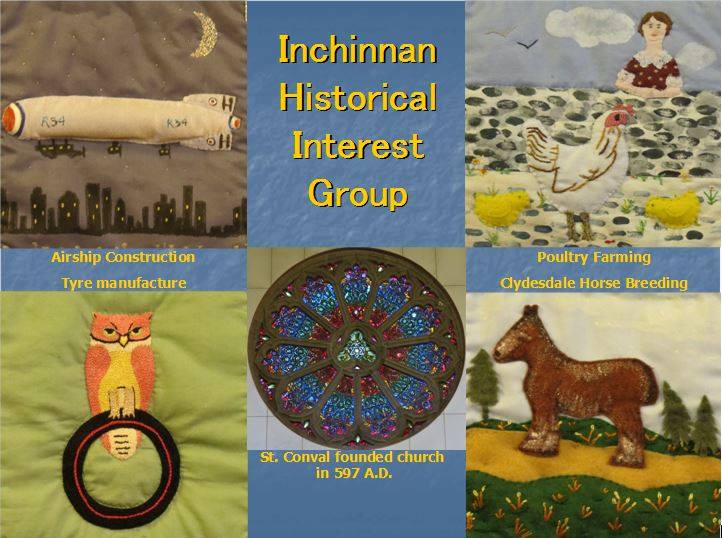Photography and gravestone recording
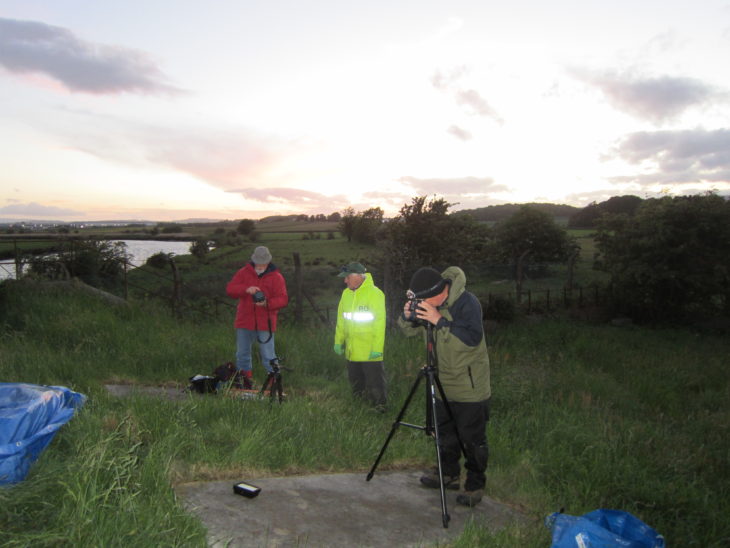
Background
Part of the All Hallows project involved obtaining an accurate photographic record of all gravestones at the site.
In November 2016 the group started tidying up the site in preparation for the Archaeological project. There were 86 visible gravestones. Since then a further three gravestones at the North end of the main wall were discovered. Of the 89 gravestones now visible; 6 were unidentified, 3 were too faint to read, 7 record only the initials of the deceased and 2 were only fragments of gravestones. 71 gravestones had their inscriptions transcribed.


 Gravestones at All Hallows.
Gravestones at All Hallows.
Conservation methods were adopted to make inscriptions on the stones as clear as possible. Harsh cleaning of such stones is prohibited so they were brushed lightly to remove grass and debris. The condition of the inscriptions on the stones varied from good clear lettering to older stones in a poor and very weathered condition. Some stones original inscriptions were only scratched onto the surface making examination and identification of them difficult.
TECHNIQUE
In order to get a focused and sharp image of a gravestone a DSLR camera was mounted on a tripod and the shutter fired by remote control. Vertical stones posed no problems but those lying flat on the ground were more difficult to capture as the camera had to be fired from a position higher than was practical to photograph the full size of the stone. As a solution to this problem two or more shots were taken down the length of the stone and then joined together using computer software.
The lighting conditions also played a vital part in the process. Bright and angled sun across the stone was ideal. When the condition was less than perfect a technique borrowed from Reflective Transference Imaging ( RTI) and the sun casting a shadow across the stone was used. This involved a flashgun remotely fired by the camera, positioned at a low angle across the surface of the stone helping to highlight shadows of any engraving that remained.
RTI
A technique to enable the reading of extremely faint engravings. This was carried out in the dark with the camera fixed over the area to be investigated. A portable LED light was moved from one position to the next in the shape of an umbrella with a photo taken at each of 40 or more positions.
The resulting images were uploaded into the RTI builder software and a single composite file compiled. Using the RTI viewer the image is changed by manipulating the light conditions around the stone making the illegible wording on the surface visible. Borrowing from this method, a flashgun was used instead of a LED light to produce similar results during the daytime.
Night time R.T.I. work
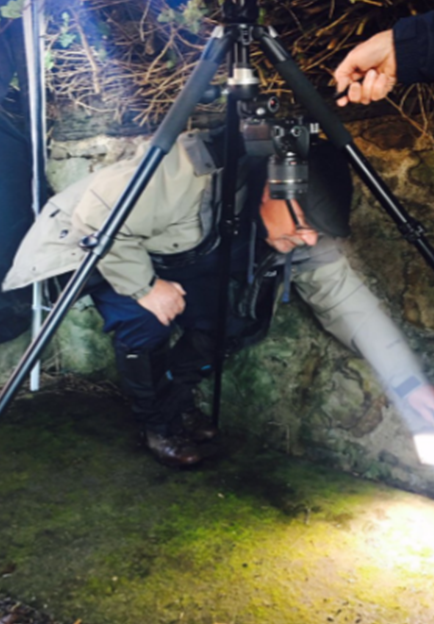


Photographic image R.T.I. image
Some inscriptions were easy to read:
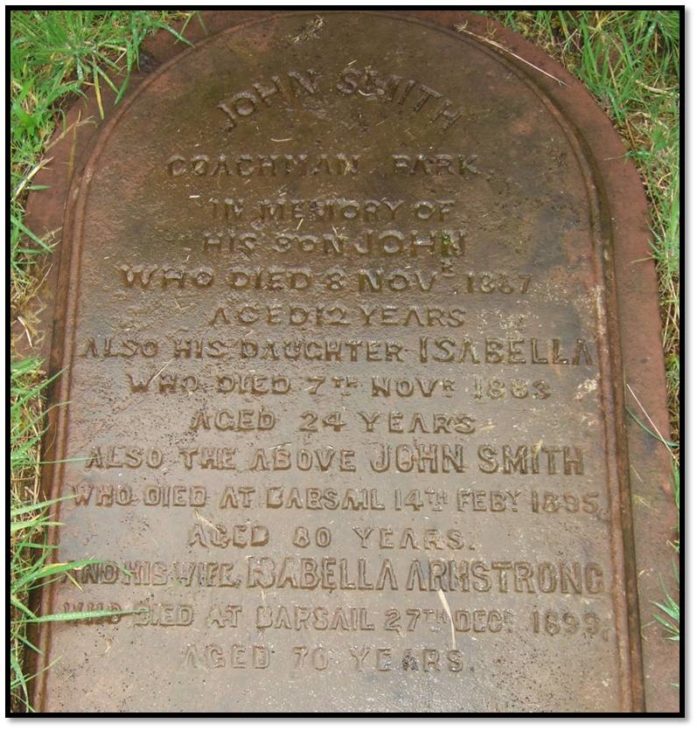
Some were not so easy to read:
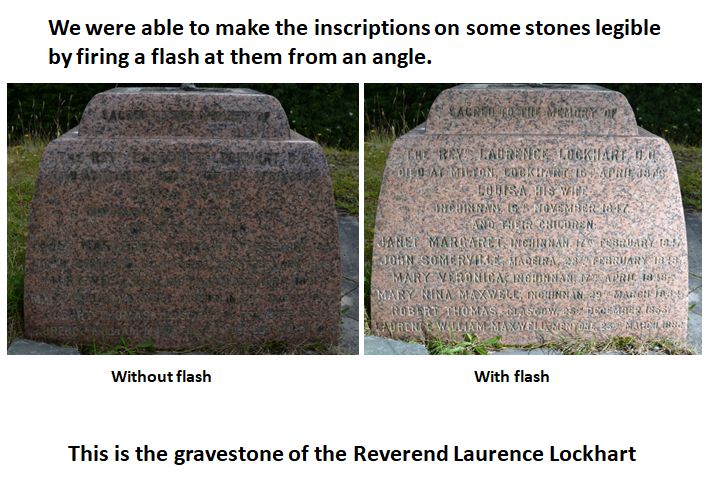
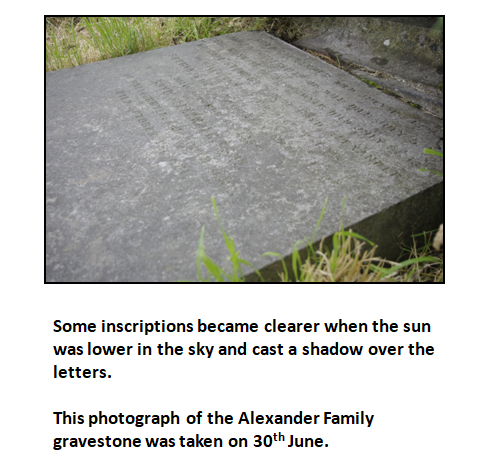
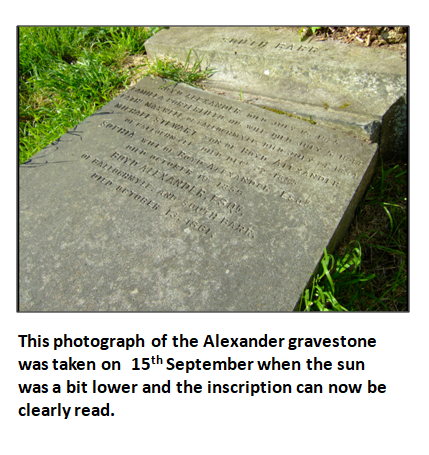
The group envision that sometime in the future the resultant images together with the inscriptions transcribed as they appear on the stone will be available as part of an online database.
Unfortunately, some stones are so faint or weathered that it was impossible to read any wording remaining on the stone. In the future the group plan to have an online database of all the recorded gravestones at All Hallows.
